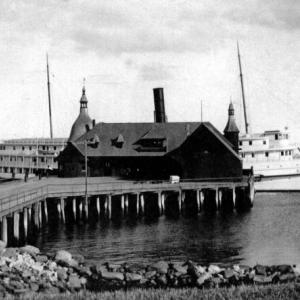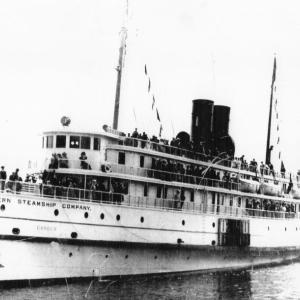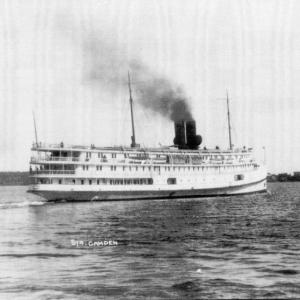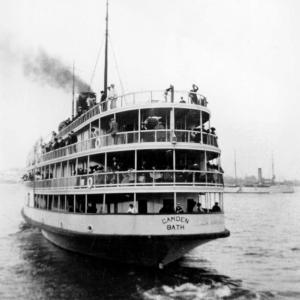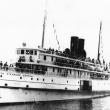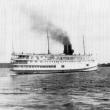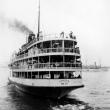Barbara Dyer: Traveling the Boston Boat up and down the coast
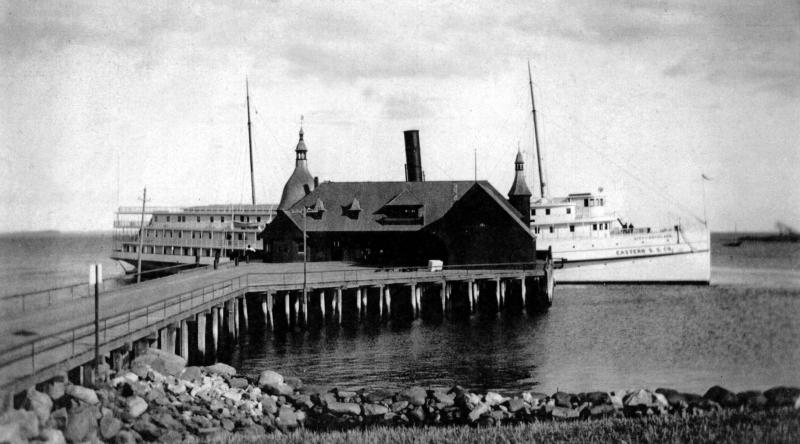 The City of Rockland berths at a Rockland wharf. (Photo courtesy Walsh History Center/Camden Public Library)
The City of Rockland berths at a Rockland wharf. (Photo courtesy Walsh History Center/Camden Public Library)
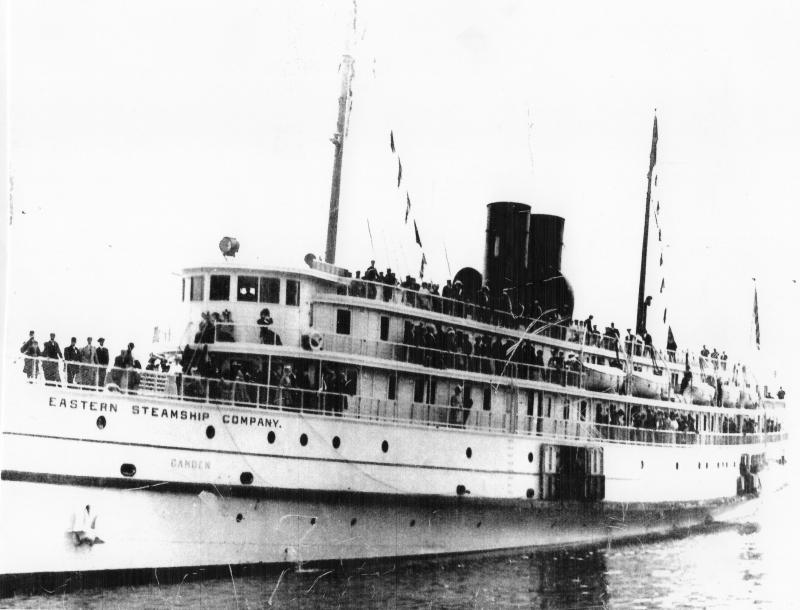 The ‘Camden’ (Photo courtesy Walsh History Center/Camden Public Library)
The ‘Camden’ (Photo courtesy Walsh History Center/Camden Public Library)
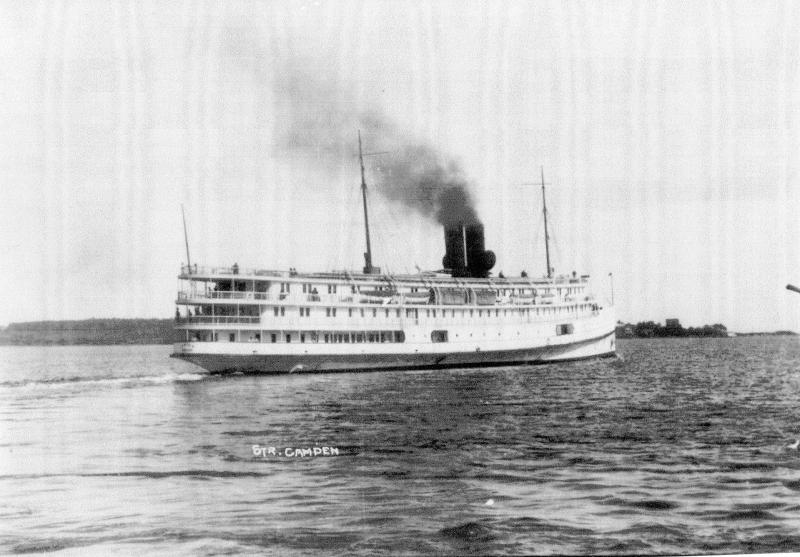 Steaming across Penobscot Bay. (Photo courtesy Walsh History Center/Camden Public Library)
Steaming across Penobscot Bay. (Photo courtesy Walsh History Center/Camden Public Library)
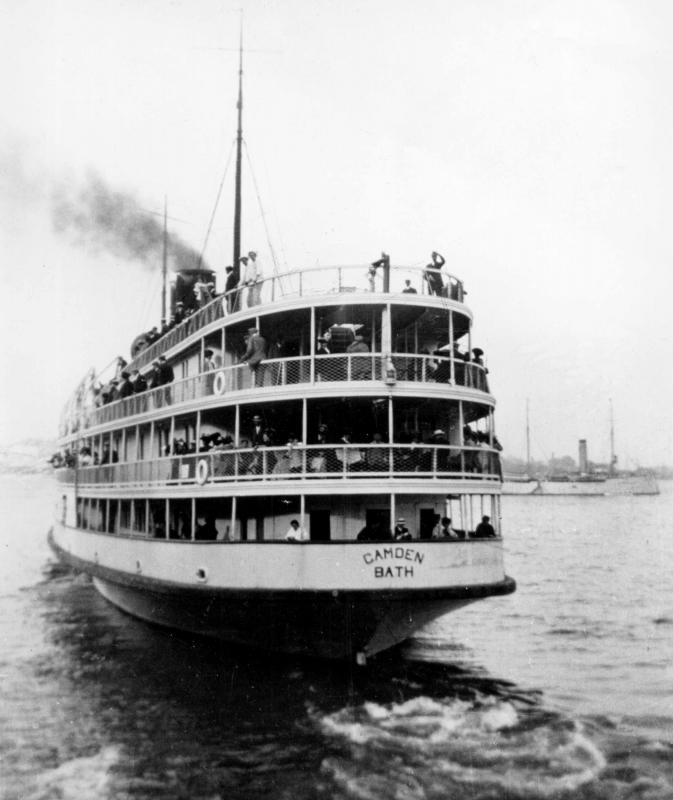 (Photo courtesy Walsh History Center/Camden Public Library)
(Photo courtesy Walsh History Center/Camden Public Library)
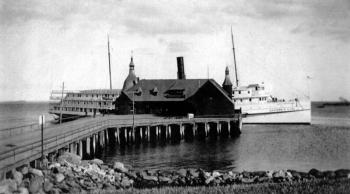 The City of Rockland berths at a Rockland wharf. (Photo courtesy Walsh History Center/Camden Public Library)
The City of Rockland berths at a Rockland wharf. (Photo courtesy Walsh History Center/Camden Public Library)
 The ‘Camden’ (Photo courtesy Walsh History Center/Camden Public Library)
The ‘Camden’ (Photo courtesy Walsh History Center/Camden Public Library)
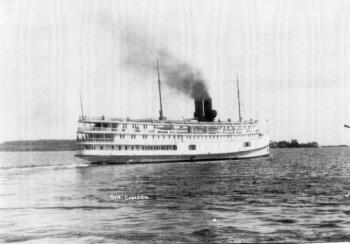 Steaming across Penobscot Bay. (Photo courtesy Walsh History Center/Camden Public Library)
Steaming across Penobscot Bay. (Photo courtesy Walsh History Center/Camden Public Library)
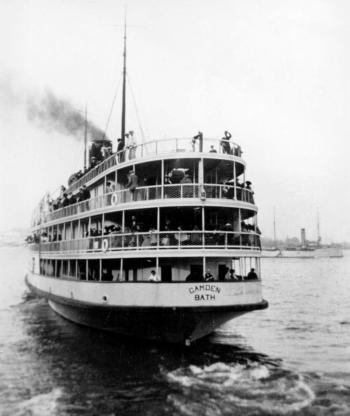 (Photo courtesy Walsh History Center/Camden Public Library)
(Photo courtesy Walsh History Center/Camden Public Library)
It was in 1823 that the first steamboat ever entered Camden Harbor, and people were not happy about that. According to Reuel Robinson's History of Camden, they were afraid it would scare all the fish. But, steamboats came up Penobscot Bay anyway. That was progress.
The first to come here was named the Maine, captained by Daniel Lunt, of Lincolnville. When it arrived in Camden Harbor, they were greeted by a salute from a cannon. It connected at Bath with the steamer Patient, which ran between Bath and Boston.
The first line from Boston to Bangor was the Sanford Steamship Co., starting in 1833 and running for 49 years.
In 1882 it was the Boston & Bangor S. S. Co.; in 1902 the Eastern S. S. Co., and in 1912 the Eastern S. S. Corp. Then in 1917 until 1935, it was known as the Eastern Steamship Lines, Inc. Everyone called it the “Boston Boat.”
The sister ships, the City of Rockland and the City of Bangor, both sidewheelers, were replaced in 1909 by the Camden and the Belfast. The Camden was built and launched at Bath Iron Works on Feb. 14, 1907 and was a steel turbine steamer. Her twin, Belfast, was launched from there in 1909, both being approximately 320 feet at the waterline.
It was a wonderful mode of travel, used by tourists, salesmen, children going to camp, ordinary people and even the Gibson Girls, who summered on Seven Hundred Acre Island. There were smaller boats to meet the steamers to go to some of the islands.
The steamers left Foster's Wharf in Boston promptly as the whistle blew at 5 o'clock in the afternoon. That gave three hours of daylight to enjoy sailing along the Massachusetts coast. Nahant, Salem, Marblehead and Gloucester were successively passed and darkness set in just after the twin lights at Cape Ann were rounded.
Early risers could see some beautiful views of our rockbound coat between the Kennebec and Penobscot rivers. After that distance, the water was smoother due to the numerous islands that acted as breakwaters. About 3 a.m., it passed Monhegan, Mosquito Island, Tenants Harbor and Whitehead Island light. Then it made its way through either of two channels to Owls Head and Rockland Breakwater. They stopped in Rockland for about 20 minutes to load freight.
Camden people would gather at the end of Sea Street about 7:30 a.m., when the Boston Boat would arrive. In fact, there was a light at the wharf that went on when the Boston Boat was in sight and people went there, some for the excitement. Farmers shipped their produce from here to Boston.
As one collected his baggage, the porter would say: “All those passengers what intended stopping at the beautiful village of the Penobscot [meaning Camden], please land on the upper deck stepping forward. They would roll down a pretty red carpet and shiny, brass spittoons would line the edges.
People that have memories of the Boston Boat would love to have that mode of travel today.
Barbara F. Dyer has lived in Camden all her life, so far.
More Barbara Dyer
Curtis Island Lighthouse — the sentinel of Camden Harbor
Camden Harbor: As old as the last glacier
Barbara Dyer: Windjammer cruises in Camden
Event Date
Address
United States

